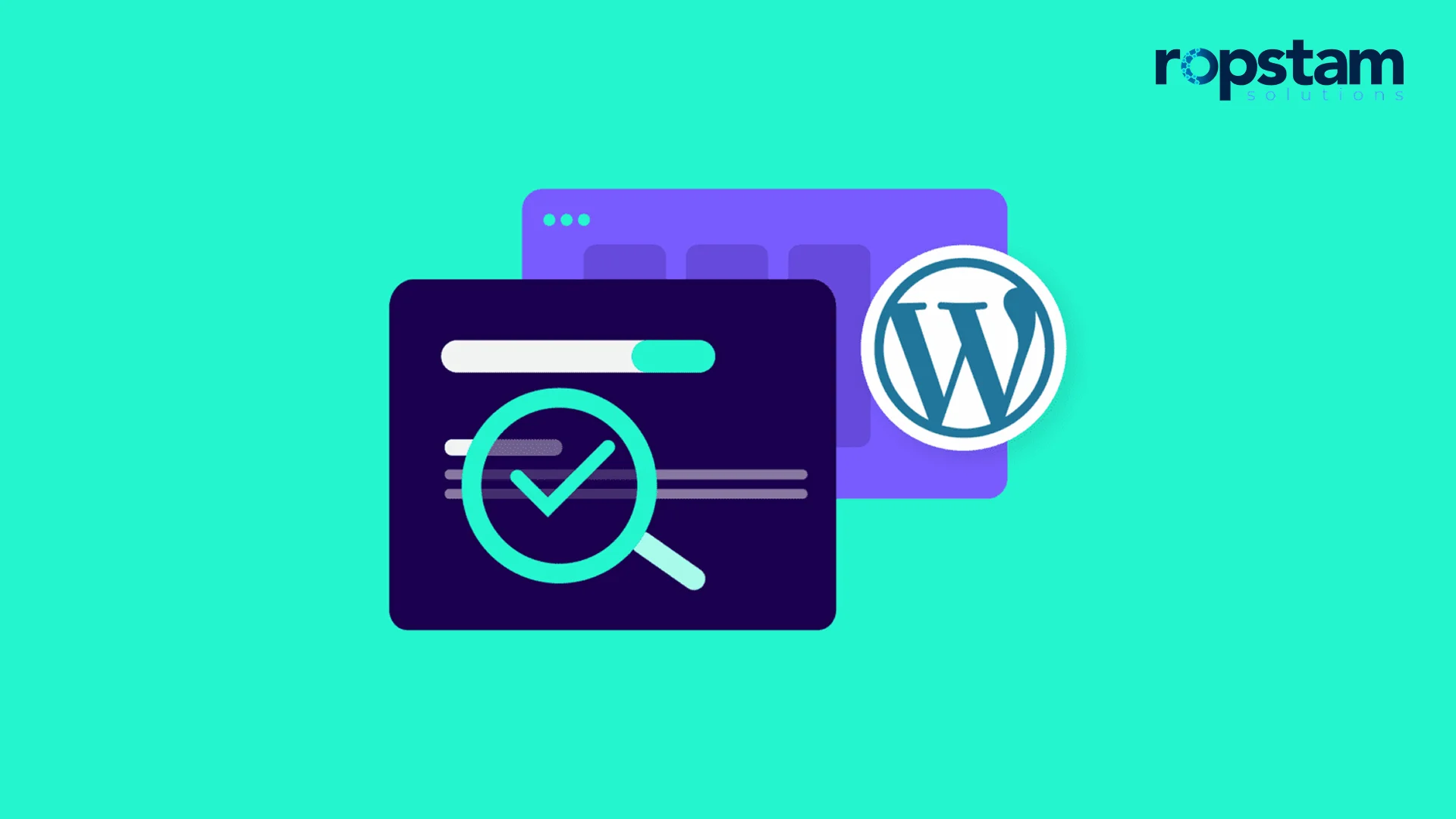A website redesign is a comprehensive transformation that significantly modifies key aspects such as content, structure, code, and visuals of your existing site. This strategic overhaul aims to reduced bounce rates, improve visitor experience, improved user experience (UX), and leading to increased revenue.
Redesigning a website is a complex process that can go horribly wrong if you’re not careful. One must keep in mind that common pitfalls in this regard include not defining your goals which can lead to directionless redesign, not focusing on CTAs which can lead to towards poor user actions, ignoring SEO causing website to loose its rankings in the search engines, neglecting the calculation of the final budget required for the process, redesigning leading to non-responsive websites, and following unachievable goals for the given lines which leads to rushing through without proper planning.
Utilizing the knowledge and skill set of website designers at Ropstam, below we have delineated some of the most crucial website redesigning mistakes you must steer clear of to ensure that the complete process goes without a hitch.
Avoiding these blunders of website redesign is important to complete the process smoothly. it will ultimately keep the audience engaged with an attractive user interface of the website and present your content in a completely new view.
Here are some of the major website redesigning mistakes that website designers should avoid before starting or during the process:
- Not defining your goals
- Not focusing on CTAs
- Non-support for SEO
- Not calculating the final budget
- Designing non-responsive websites
- Setting unrealistic timelines
- Improper testing of the redesigned website
- Slow loading speed
- Non-functional website
- Not visually appealing
- Neglecting the target audience
- Not allocating proper budget
1. Not defining your goals
Embarking on a website redesign without clear goals is like starting your journey without a destination in mind. That’s why It’s crucial to establish specific, measurable objectives before you begin. Are you aiming to increase conversions, improve user engagement, or enhance your brand image?
Failing to define your goals can lead to a directionless redesign that wastes time and resources. You might end up with a pretty site that doesn’t actually solve your business problems.
By setting clear goals, you ensure that every design decision and feature implementation serves a purpose. This focused approach not only simplifies the redesign process but also maximizes your return on investment.
2. Not focusing on CTAs
A Call to action (CTA) is a directive on a website that encourages users to perform a specific task. A CTA often appears as a button or hyperlink and is usually presented as a command or action phrase like “Sign Up” or “Buy Now”.
Call-to-Action buttons are similar to signposts guiding your visitors toward conversion. Overlooking their importance is a common yet costly mistake in website redesigning.
Why is this a critical error? Because even the most stunning website design falls flat if it doesn’t prompt user action. Effective CTAs can dramatically boost your conversion rates, whether you’re aiming for sales, sign-ups, or downloads. They should be strategically placed, visually striking, and use compelling copy. Therefore, you must not let your redesign efforts go to waste by neglecting these crucial elements.
3. Non-support for SEO
SEO, or “search engine optimization,” is the practice of enhancing your website to boost its visibility on search engines like Google and Microsoft Bing. This process aims to make your site more discoverable when users search for products you sell, services you offer, or information on topics where you have significant expertise and experience.
Claiming that ignoring SEO is a website redesigning mistake that can severely impact your online visibility and traffic would be an understatement. Imagine putting a lot of effort and resources into redesigning your site only for it not to rank on Google SERPs.
Many businesses focus solely on aesthetics, forgetting that search engines are their primary source of organic traffic. This oversight can lead to a noticeable drop in rankings post-redesign. To avoid this, ensure your new design incorporates SEO best practices.
This includes maintaining your URL structure, optimizing page load speeds, and preserving valuable content. A visually appealing website is great, but it’s useless if your target audience can’t find it in search results.
4. Not calculating the final budget
The total budget for the website redesign is the overall cost that will be required for the task. The final budget will depend on the website’s size, total number of pages of the website, functionality depending on the type of website, style of design, copywriting of the number of pages, SEO, database integration, and CMS or builder used to build or manage the website.
Underestimating or failing to calculate the full cost of a website redesign can lead to financial stress and an incomplete project. It’s a mistake that can derail your entire redesign effort completely.
Why is this so crucial? Because website redesigns often involve hidden costs that can quickly add up. From unexpected development challenges to content creation and testing, there are numerous factors to consider. Without a comprehensive budget, you might find yourself cutting corners or abandoning important features mid-project.
To prevent such a scenario, take the time to assess all potential costs thoroughly. Include a buffer for unforeseen expenses. With this approach, you can ensure that you can complete your redesign without compromising on quality or functionality.
5. Designing non-responsive websites
A non-responsive website does not adjust its content and layout to accommodate various screen resolutions and sizes. As a result, the website will not appear the same across different devices, whether viewed on a smartphone, desktop computer, or tablet.
In today’s mobile-first world, creating a non-responsive website is a critical error. It’s like building a store that’s only accessible to people of a certain height – you’re automatically excluding a large portion of your potential customers.
Nowadays, mobile devices account for over half of all web traffic. Ignoring this trend means you’re potentially alienating more than 50% of your visitors. A non-responsive design leads to poor user experience on smartphones and tablets, resulting in higher bounce rates and lower conversions. Google also prioritizes mobile-friendly sites in its rankings. So, ensure your redesign is fully responsive.
6. Setting unrealistic timelines
Have you ever encountered a project that involves completely redesigning a website in an extremely limited time period? Needless to say, this is a recipe for disaster. Setting unrealistic timelines is a common mistake that can compromise the quality and effectiveness of your new site.
But one might ask why this is so detrimental. That’s because a well-executed redesign requires careful planning, thoughtful implementation, and thorough testing. Unrealistic deadlines often lead to cutting corners, skipping crucial steps, or launching before the site is truly ready.
The final result? A subpar user experience, overlooked bugs, or missed opportunities for optimization. Therefore, as a project owner or team lead, try to create a realistic timeline that allows for unexpected challenges and revisions.
7. Improper testing of the redesigned website
Testing of a redesign website refers to the technique of usability testing which is used to help identify and solve problems in your new web design. The purpose of this test to check how the users will interact with the new design of your website. User tests should be conducted at every stage of a website project to ensure that your site meets the needs and expectations of your target audience.
Launching a redesigned website without thorough testing is like serving a meal without tasting it first—you risk a poor experience for your guests. This oversight can lead to embarrassing errors and frustrated users.
Proper testing is pivotal because it uncovers issues that might not be apparent during development. From broken links and non-functioning forms to compatibility issues across different browsers and devices, numerous problems can slip through without rigorous testing. These issues can damage your brand’s credibility and drive away potential customers.
You must Implement a comprehensive testing strategy that includes user testing, cross-browser checks, and mobile responsiveness. It’s an investment that pays off in a smooth, error-free user experience.
8. Slow loading speed of website
Website speed refers to how quickly a browser can load fully functional webpages from a site. Slow-loading sites can frustrate users and drive them away.
A slow-loading website in today’s fast-paced digital world indubitably drives customers away, resulting in lower conversion and higher abonnement rates. Neglecting site speed during a website redesign is a critical mistake that can counter all your other improvements.
Why is this so important? Because users have little patience for slow sites. Studies show that the majority of mobile users abandon sites that take over 3 seconds to load. Moreover, keep in mind that slow loading speeds not only frustrate users but also negatively impact your search engine rankings. This is because Google considers page speed to be a ranking factor.
To avoid this crucial mistake, prioritize performance optimization during your redesign. This includes compressing images, minifying code, leveraging browser caching, and choosing a reliable hosting provider. The faster your website loads, the more the chances of turning your website visitors into loyal customers.
9. Non-functional website
Imagine opening a store with empty shelves – isn’t it a complete waste of time and resources? This is exactly what a non-functional website represents. A non-functional website, irrespective of how visually appealing it is, will never catch the attention of your target audience.
In this context, a non-functional website, whether due to broken links, non-working forms, or incompatible plugins, creates a frustrating user experience. It can lead to high bounce rates, lost conversions, and a drop in search engine rankings.
To avoid such a critical mistake, implement a thorough quality assurance process. Test every feature, link, and form before launch. Also, ensure your site works across different browsers and devices. A simple, working website is far better than a beautiful, broken one.
10. Non-visually appealing website
While functionality is no doubt crucial, a visually unappealing website can fail to engage visitors and reflect poorly on your brand. This is because humans are visual creatures. An attractive, well-designed website can capture attention, evoke emotions, and create a positive first impression. It can also make your content more digestible and your calls to action more compelling.
However, you must not confuse ‘visually appealing’ with ‘overly complex’. Try to aim for a clean, modern design that aligns with your brand identity and enhances user experience. Needless to say, a good design should support your content and functionality, not overshadow them.
11. Neglecting the target audience
Redesigning your website without considering your target audience is a critical error that can result in all your efforts and resources going to waste. Keep in mind this oversight can result in a website that fails to meet user needs and business objectives.
Why is this crucial? Because the whole purpose of redesigning your website is to serve your audience. Neglecting their preferences, behaviors, and needs can lead to poor user experience and low conversion rates.
Try to conduct thorough user research before and during your redesign. Also, make use of analytics data, user surveys, and persona development to understand your audience. Then, tailor your design, content, and functionality to meet their specific needs. Remember, a website that resonates with its target audience is more likely to achieve its business goals.
12. Not allocating proper budget
Underbudgeting for a website redesign is equivalent to renovating a house on a limited budget—you’ll likely end up with subpar results. This mistake can lead to website owners cutting corners, which can compromise quality and result in a final product that falls short of expectations.
It is your responsibility to thoroughly research the costs associated with each aspect of your redesign. Also, include a buffer for unexpected expenses. As a project manager or website owner, it’s crucial to obtain a detailed estimate of the costs involved in your website redesign before starting the project.
Why should you redesign your website?
Now that you are aware of the common mistakes you must avoid in the website redesign process, one lingering question remains: what is the actual need to redesign an existing website? Here are some of the factors to help you comprehend this point:
- Modernize Your Digital Presence: In the modern digital world, an outdated website can prove to be a significant liability. Website redesign offers the perfect opportunity to breathe new life into your online presence. By incorporating contemporary design trends and modern aesthetics, you can create a fresh, appealing look that resonates with today’s users.
- Improve Conversion Rates: One of the most compelling reasons for a website redesign is the potential to boost your conversion rates. A well-executed redesign focuses on creating clear, persuasive user journeys that guide visitors toward desired actions. This thoughtful approach to design can transform casual browsers into engaged leads or paying customers.
- Adapt to Mobile-First Browsing: With mobile devices accounting for an ever-increasing share of web traffic, ensuring your site is fully responsive is no longer optional – it’s essential. A redesign allows you to adopt a mobile-first approach, ensuring your website performs flawlessly across all devices and screen sizes.
What are things to be kept in mind when redesigning a website?
Redesigning a website can be both exciting and challenging. A well-redesigned website boosts engagement, attracts and retains visitors, and drives business success. Here are key factors to consider during a website redesign:
- Define your goals and objectives. Clearly define the goals and objectives for the redesign. Determine what you want the new website to achieve and establish criteria for evaluating your progress.
- Understand your audience. The success of your website redesign hinges on understanding your audience. Know their expectations and needs to create a user experience that resonates with them.
- Check the content. Evaluate existing content to decide what to add, update, or remove. Ensure the new content is engaging, optimized, and relevant for search engines.
- Perform a thorough website audit. Conduct a comprehensive website audit to identify areas needing improvement. This audit will help you uncover issues like poor user experiences, broken links, slow loading times, and outdated content.
- Test and Iterate the design. After launching your redesigned website, continuously test it to enhance the user experience. Gather feedback, monitor user behavior, and make necessary adjustments to ensure the website meets its goals and objectives.
When is the best time to redesign your website?
Determining the optimal time for a website redesign isn’t about following a fixed schedule but rather recognizing key indicators. Consider a redesign when your site’s performance declines, user feedback turns negative, or your brand evolves significantly.
Technology advancements or shifts in your target audience’s behavior are also crucial triggers. Ultimately, the best time is when your current site no longer effectively serves your business goals or user needs.
What are website redesign best practices?
If you are seeking the ideal tips and tricks to enhance the website redesign process, you have come to the right place:
- Conduct a thorough audit of your existing site
- Define clear goals and KPIs
- Prioritize user experience (UX)
- Maintain SEO value
- Implement a content strategy
- Plan for post-launch optimization
What is the website redesign process?
The website redesign process is a structured journey that typically begins with a comprehensive analysis of your current site and business goals. Next comes the planning phase, where you define objectives, create a strategy, and develop a project timeline.
The design stage follows, focusing on user experience, visual aesthetics, and functionality. Then, the development brings your design to life, followed by rigorous testing and quality assurance. Finally, the new site launches, but the process doesn’t end there—continuous monitoring and optimization are equally important to ensure long-term success.
How does website redesign affect SEO?
Website redesign does affect Your SEO. If you have launched a redesigned website, this means that your metrics will drop some or a lot depending on how good your new design is and how well it is implemented. You’ll likely experience some loss in traffic and keyword rankings after a redesign, but it won’t be as severe as if you hadn’t been proactive.
There’s no need to panic, though, as these dips are usually temporary. Remember, search engines need time to crawl your updated site before presenting it to users, which can lead to a short-term decrease. Once search engines understand your new site’s structure, you’ll likely see a swift return to normal.
Involving a SEO team from the very beginning is the best way to prevent major, immediate issues. They can set you up for success before launch and monitor and mitigate any post-launch impacts.
What is the estimated cost of redesigning a website?
The cost of a website redesign can vary significantly based on several factors. These include the size and complexity of your site, the extent of changes needed, and the level of customization required. To summarize, small businesses might invest a modest sum, while larger corporations could allocate substantial budgets when it comes to the website redesigning process.
Some of the major factors that determine the cost of redesigning a website are:
- Integrations
- Content
- Responsive design
- Size
- Design
- Functionality
- Marketing
Should your hire a company or agency to redesign your site?
Yes, you should hire a web design company or agency to redesign your site. Partnering with a website design agency or company can be a gamechanger as they when redesigning a website, they take care of responsiveness, accessibility, branding, functionality, and many other important factors.
The website design company takes the responsibility of giving a new look to your website so that you can get more users and offer them better user experience that will lead to growth of your business.
Why choose Ropstam to get website redesign services?
Choosing a web design company like Ropstam to get website redesign services can give your website a new look without making any mistakes to ensure your redesigned website is appealing enough as well as fully functional to engage customers. We use the ideal resources such as web designers, developers, etc. to make sure that the website redesign process is highly useful in the long term.
Ropstam Solutions is a top-tier website redesign service-providing company who have a dedicated team of web app developers ready to transform your web app or website. With more than a decade of experience in this field, we are ready to help you redesign your website. Give us a call at +1 (866) 631-8767 or send us an email at info@ropstam.com today and witness the magic firsthand.














